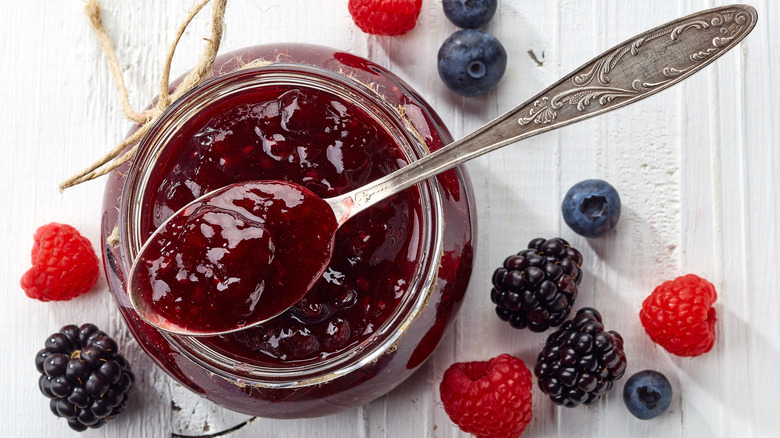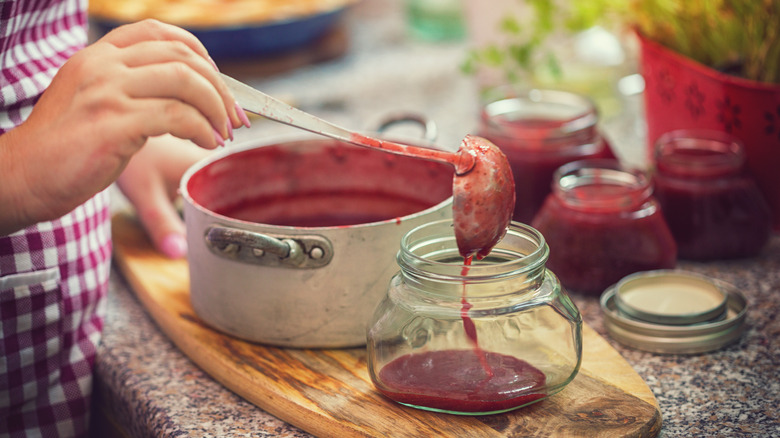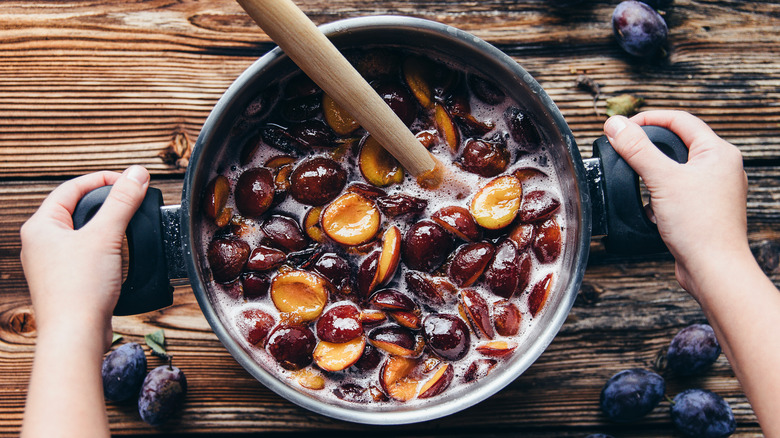What Is Pectin And How Do You Cook With It?
Anyone who has ever made a batch of homemade jam or jelly has likely hunted down a box of pectin in the grocery store, typically found in the baking aisle near the home canning products. Commercial pectin is sold in either a powdered or liquid form, and different recipes might specifically call for one or the other depending on the type of fruit or amount of sugar used.
Let's break down what this powerful mystery ingredient really is, as well as the ways that you can cook with it in recipes. Pectin is a naturally occurring component of fruits and vegetables, and what you can purchase in the grocery store is simply a more convenient form that has been extracted to be used in recipes. It is the ingredient that makes jams, jellies or even your holiday cranberry sauce take on a wobbly, gel-like consistency. Without harnessing the power of pectin, these recipes would be thin and watery. Technically, pectin is a soluble fiber but think of it as a vegan form of gelatin that doesn't set quite as hard.
Natural vs commercial pectin
That soluble fiber occurs in the cell walls of fruits and vegetables. Different fruits and vegetables naturally contain different levels of pectin. Contrary to what you might expect, the riper the produce, the lower the pectin levels. It is possible to cook down fruit for a long time in order to concentrate the natural pectin levels enough to thicken the jam or jelly. However, this requires a larger amount of (unripened) fruit, as well as a lot of time and patience. That's when commercial pectin comes into play.
Since pectin is naturally occurring in plants, even when it is sold commercially, it is a vegetarian product that can even be used in place of gelatin in recipes like gummy candies as a vegan alternative. Purchasing a powdered or liquid pectin product is a much quicker and easier way to thicken a recipe. Plus, it is more predictable and leads to a more consistent final product.
How pectin works in recipes
The magic happens when pectin is heated with fruit, sugar, and acid. That's when its gelling properties are harnessed to thicken jams, jellies, and preserves. The key is to heat a mixture to 220 degrees Fahrenheit in order to fully activate the pectin. In fact, you can even make creative and unique recipes such as a spreadable beer jelly thanks to the addition of pectin.
Powdered pectin is the most common form used in recipes, and it is typically added to the fruit and sugar mixture before it comes to a boil. Whereas liquid pectin is added to an already boiling mixture after it has already cooked for a while. There are even pectin products specifically formulated for lower-sugar recipes. This is what you will want to use if you want to reduce the amount of sugar in a recipe for a jam or jelly and focus on the natural sweetness of the fruits themselves.
Pectin usually works in your favor in recipes, but sometimes the natural pectin in fruit can cause recipes to thicken too much, even if you don't want them to. That's why sometimes a homemade cocktail sauce gets congealed. The pectin in the tomatoes reacts with the acidity in the horseradish to naturally thicken the mixture. If your jam, jelly, or marmalade ends up too thick, simply add a little more fruit juice or water to thin it out.



